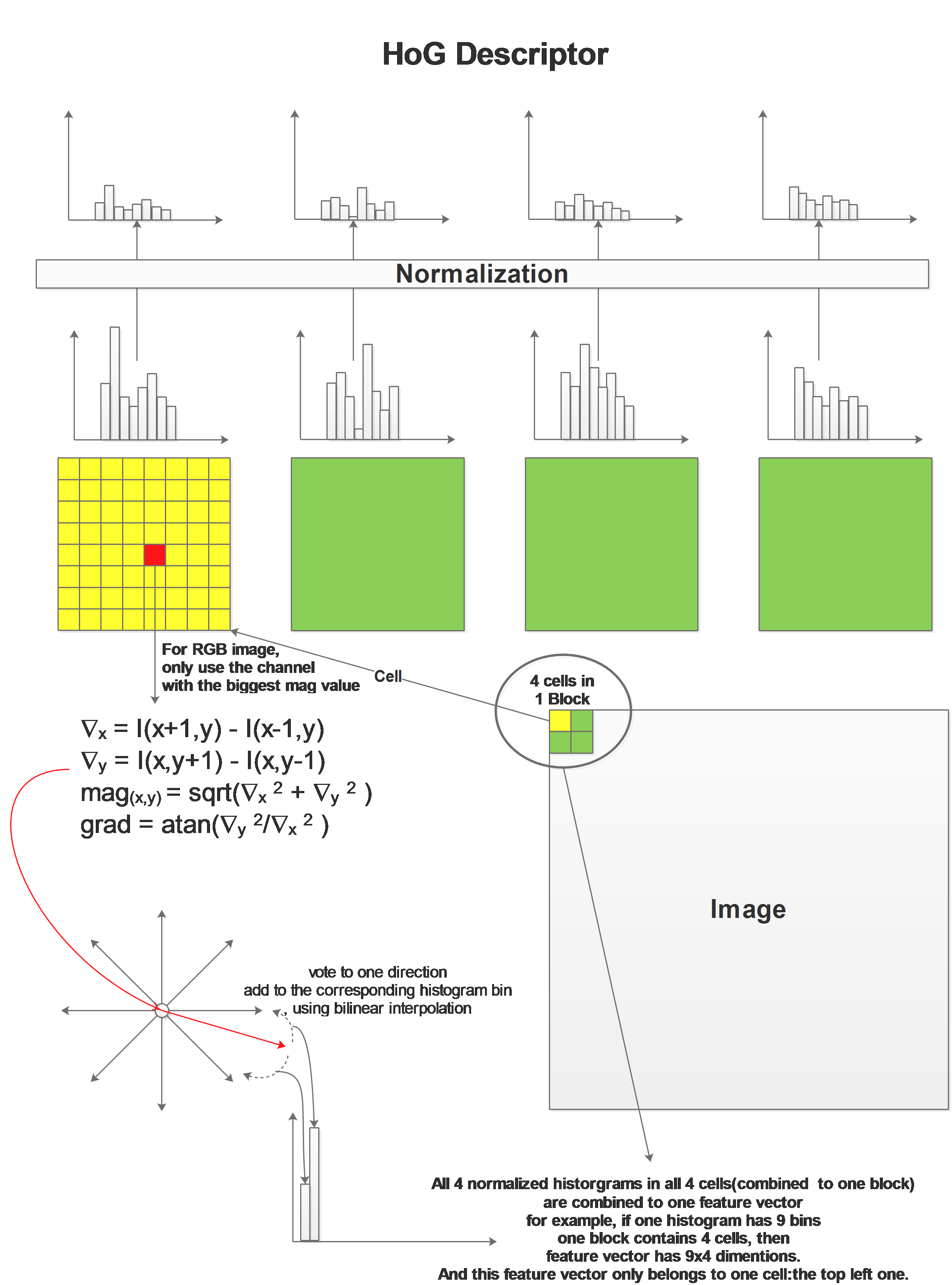HoG Feature
HoG (Histograms of Oriented Gradients) feature is a kind of feature used for human figure detection. At an age without deep learning, it is the best feature to do this work.
Just as its name described, HoG feature compute the gradients of all pixels of an image patch/block. It computes both the gradient’s magnitude and orientation, that’s why it’s called “oriented”, then it computes the histogram of the oriented gradients by separating them to 9 ranges.
One image block (upper left corner of the image) is combined of 4 cells, one cell owns a 9 bins histogram, so for one image block we get 4 histograms, and all these 4 histograms will be flattened to one feature vector with a length of 4x9. Compute the feature vectors for all blocks in the image, we get a feature vector map.
Taking one pixel (marked red) from the yellow cell as an example: compute the \(\bigtriangledown_x\) and \(\bigtriangledown_y\) of this pixel, then we get its magnitude and orientation(represented by angle). When calculating the histogram, we vote its magnitude to its neighboring 2 bins using bilinear interpolation of angles.
Finally, when we get the 4 histograms of the 4 cells, we normalize them according to the summation of all the 4x9 values.
The details are described in the following chart:

Original Paper:Histograms of Oriented Gradients for Human Detection
